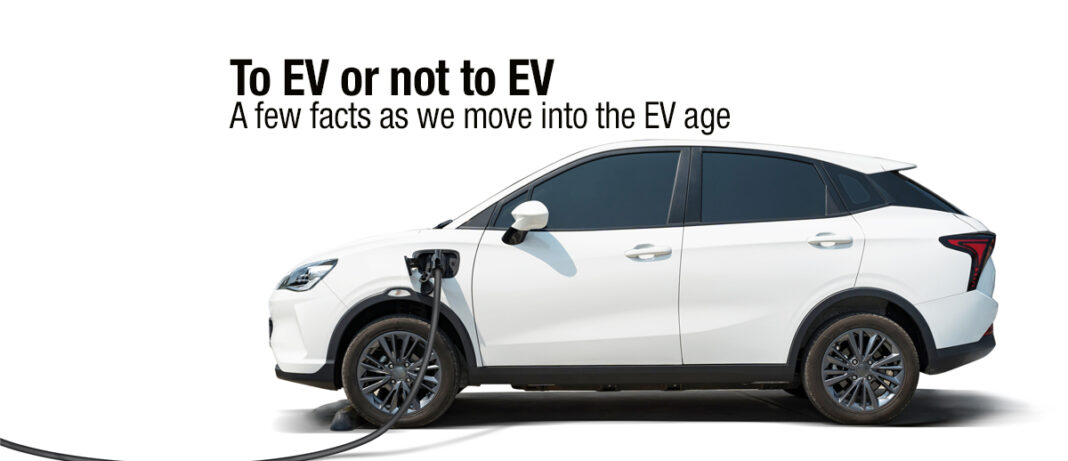TO EV: Hell yes! Electric Vehicles
Electric vehicles (EVs) offer several environmental benefits compared to conventional internal combustion engine vehicles. Here are some reasons why electric vehicles are considered good for the environment:
- Reduced greenhouse gas emissions: EVs produce zero tailpipe emissions, meaning they do not emit pollutants like carbon dioxide (CO2), nitrogen oxides (NOx), or particulate matter during operation. The reduction in greenhouse gas emissions helps combat climate change and improves air quality, leading to better human health and environmental conditions.
- Energy efficiency: Electric motors are significantly more efficient than internal combustion engines. EVs convert a higher percentage of the energy from the grid into power at the wheels, reducing energy waste and overall energy consumption. This efficiency helps to conserve natural resources and decreases the demand for fossil fuels.
- Renewable energy integration: EVs can leverage renewable energy sources, such as solar or wind power, for charging. By connecting to renewable energy grids, EVs can utilize clean, sustainable energy sources, further reducing their environmental impact and reliance on fossil fuels.
- Lifecycle emissions: Although the production of electric vehicle batteries has environmental impacts, the overall lifecycle emissions of EVs are generally lower compared to conventional vehicles. As the electricity grid becomes cleaner with the adoption of renewable energy, the emissions associated with charging EVs decrease further, enhancing their environmental benefits.
- Noise pollution reduction: Electric motors operate silently compared to the noisy internal combustion engines. This reduction in noise pollution contributes to quieter neighborhoods, which can improve the quality of life for individuals living in urban areas.
- Resource diversification: EVs promote diversification in energy sources by reducing reliance on finite fossil fuel reserves. This shift towards electricity as a transportation fuel allows for increased flexibility in energy production and distribution systems, including renewable energy integration and potential energy storage solutions.
- Technological advancements: The growing popularity of EVs is driving technological advancements in battery technology, charging infrastructure, and energy management systems. These advancements can have positive spill-over effects on other sectors, such as energy storage for renewable energy systems, enhancing overall sustainability efforts.
EXAMINING THE EXTRACTED MATERIALS REQUIRED FOR BATTERIES:
The extraction and processing of raw materials like lithium, cobalt, and nickel for electric vehicle (EV) batteries do present environmental and social challenges. However, it is important to evaluate these concerns in the context of the overall environmental impact of EVs compared to conventional vehicles. Here are some points to consider:
- Environmental impacts: The extraction of lithium, cobalt, and nickel can have negative environmental consequences. Mining activities can cause habitat destruction, soil and water pollution, and carbon emissions. However, it’s worth noting that the environmental impact of extracting these materials varies depending on the mining practices and regulations in place. Efforts are being made to improve sustainability in mining operations and reduce the environmental footprint.
- Battery improvements: The EV industry is actively working on reducing the reliance on critical raw materials and developing alternative battery technologies. For instance, research is focused on using less cobalt or even eliminating it from battery chemistries to minimize environmental concerns. Battery recycling and reuse programs are also being developed to reduce the need for raw material extraction.
- Overall lifecycle emissions: While the extraction of raw materials for EV batteries has environmental impacts, it is important to consider the overall lifecycle emissions of EVs. Studies consistently show that EVs have lower lifecycle emissions compared to conventional vehicles, even when accounting for the environmental impact of battery production. The reduced emissions during vehicle operation contribute significantly to this advantage.
- Responsible sourcing: The EV industry is increasingly recognizing the importance of responsible sourcing of raw materials. Efforts are being made to improve transparency and traceability in the supply chains to ensure that these materials are sourced ethically and sustainably, with respect for human rights and environmental standards.
- Technological advancements: Ongoing research and development are focused on finding alternatives to the most critical raw materials and improving the efficiency of battery production. These advancements aim to minimize the environmental impact associated with the extraction and processing of raw materials.
TO NOT EV: Issues Regarding The Production of Electric Vehicle Batteries
While electric vehicles (EVs) offer several environmental benefits compared to conventional internal combustion engine vehicles, they are not entirely free from environmental concerns. Here are a few reasons why electric vehicles could be considered as having negative environmental impacts:
- Battery production: The production of electric vehicle batteries involves the extraction and processing of raw materials like lithium, cobalt, and nickel, which can have significant environmental and social consequences. Mining activities can lead to habitat destruction, water pollution, and carbon emissions. However, efforts are being made to improve the sustainability of battery production and reduce the reliance on these materials.
- Energy source: The environmental impact of EVs depends on the source of the electricity used to charge them. If the electricity comes from fossil fuel-based power plants, the overall emissions associated with electric vehicle use may be similar to or even higher than those of conventional vehicles. However, as renewable energy sources like solar and wind power become more prevalent, the environmental benefits of EVs increase.
- Manufacturing emissions: The production of electric vehicles involves energy-intensive processes that generate greenhouse gas emissions. This includes the production of vehicle components, such as the chassis, body, and interior, as well as the assembly of the vehicle itself. These emissions contribute to the carbon footprint of EVs, although they can be offset by the cleaner operation of EVs during their use phase.
- Charging infrastructure: The expansion of charging infrastructure to support widespread electric vehicle adoption requires significant resources and can have environmental implications. Constructing new charging stations may involve land use changes, increased energy demand, and associated environmental impacts.
- Battery disposal: While electric vehicle batteries have a long lifespan, they will eventually reach the end of their usable life. Proper disposal and recycling of batteries are essential to prevent potential environmental contamination from heavy metals and other toxic substances. Developing efficient and environmentally friendly recycling methods is crucial for mitigating these concerns.
It’s important to note that the environmental impact of electric vehicles is still generally lower than that of conventional vehicles when considering their lifecycle emissions. The negative aspects mentioned above are areas where continued research, technological advancements, and policy measures are focused to further reduce the environmental footprint of electric vehicles.
















